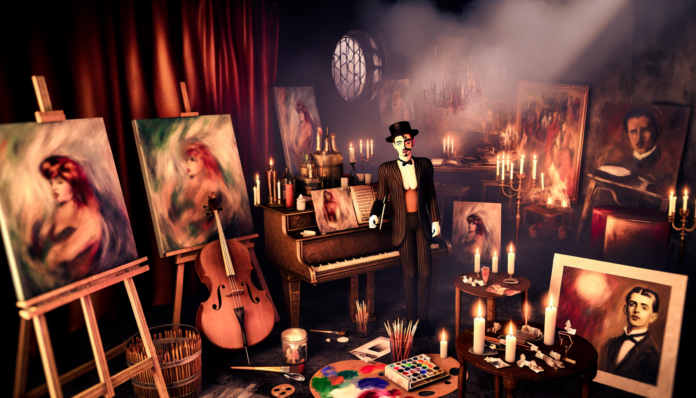Introduction
In the world of art, few figures are as polarizing as Gustav Klimt. An iconic painter of the early 20th century, Klimt is best known for his seductive and intricate depictions of women, whichreveal both their beauty and their sensuality. Within the lush folds of his canvases lies a scandal that transcends mere brushstrokes—one that highlights the complex interplay between desire, societal norms, and the female form. In the context of Vienna’s repressive society during the late 1800s and early 1900s, Klimt’s work sparked debates surrounding morality and artistic expression.
The Scandal
Klimt’s masterpiece, The Kiss (1907-1908), exemplifies the scandal enveloping both the artist and his subjects. While the painting is celebrated today for its beauty and emotive power, it initially drew criticism for its overt sexual symbolism. The intimate embrace of the lovers is not just a romantic gesture; it invites viewers into a world of eroticism that was considered taboo at the time.
The women who inspired Klimt were often part of Vienna’s elite but faced societal scrutiny for their associations with the artist. One of the key figures in Klimt’s oeuvre was Adele Bloch-Bauer, a wealthy patroness and muse who became the subject of Portrait of Adele Bloch-Bauer I (1907). At the time, their relationship ignited whispers in Viennese salons, with critics accusing Klimt of exploiting women’s bodies for his art. A contemporary art critic noted, “Klimt’s women are not mere muses; they are vessels for his carnal desires.”
Klimt’s provocative subject matter and his candid exploration of sexuality led to scandalous accusations of moral decay among Vienna’s artistic elite—fueled by the backdrop of the rigid Habsburg moral codes. His work was often branded as pornographic, igniting heated debates about the limits of artistic freedom.
Moral and Cultural Analysis
Vienna at the turn of the century was a city grappling with contradictions. While it was a hub for progressive thinkers, the prevailing moral attitudes still leaned heavily toward conservatism, particularly concerning female sexuality. The women who posed for Klimt were often vilified, regarded as promiscuous in a society that held women to stricter standards than their male counterparts. For instance, Bloch-Bauer was often scrutinized for her close ties with Klimt, reflecting the societal expectation of female decorum.
The backlash against Klimt’s work and his muses resulted in a cultural pushback against artistic expression that challenged traditional norms. Several exhibitions featuring his work faced censorship, leading to fierce debates in the media—a scenario reminiscent of modern controversies surrounding artists and their subjects.
Fast forward to today, Klimt’s exploration of sexuality and femininity would likely be interpreted through a lens of empowerment rather than scandal. The ongoing dialogue around female representation in art suggests a shift toward appreciating women’s agency. In contemporary discourse, Klimt’s bold portrayal of women can be seen as revolutionary, celebrating their sexuality as an integral part of their identity.
Klimt’s art invites us to reconsider not only the societal norms of his time but also our own. The scrutiny that women faced then highlights ongoing discussions about how female figures are represented in media and art today, proving that while decades may pass, cultural attitudes continue to evolve yet often retain echoes of the past.
By examining Klimt’s work and the women he portrayed, we witness how a historical scandal encapsulates larger themes of artistic freedom, gender dynamics, and societal values that resonate with contemporary issues in the realm of art and ethics.

